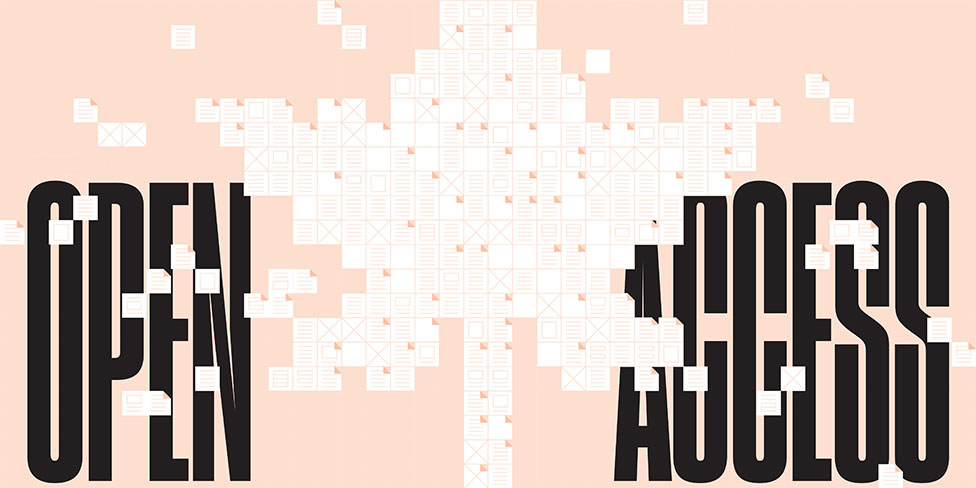Academic publishing at a crossroads
The shift towards open access is an opportunity to reform academic publishing to better serve the public interest.

“An old tradition and a new technology have converged to make an unprecedented public good possible.”
This is a statement from the Budapest Open Access Initiative (2002), which is often cited as having birthed the open access movement. But even before that, predecessors to the movement had already shown the capacity of this “new technology” (the web) to rival the centuries-old tradition of academic print publishing and to radically change the way research findings are shared, communicated, evaluated and utilized.
As in other fields (music or television, for example), the ongoing transformation of the academic publishing sector has been the subject of – at times heated – debate. The open access movement’s vision for the free use of academic papers is to see researchers regain control of key aspects of the publishing process. A more open and dynamic system would improve the culture of academe and considerably reduce the costs associated with academic publishing, which have become prohibitive.
It is difficult to predict the outcome of this shift, but one thing is certain: in the near future, research findings will be disclosed in a much different manner than they have been. What we should be asking ourselves instead is: how, exactly, will this shift translate to a “public good?” In other words, will academic publishing better fulfill its key roles in dissemination and quality control, and can it do so at a more reasonable cost? The answer will depend on the actions taken by the various groups involved: publishers, librarians, research funding agencies and, of course, the researchers themselves.
Publishers
The world of academic publishing is very diverse and includes thousands of publishers. At one end of the spectrum, there are the university presses and discipline-specific associations that publish only one or two journals and whose primary function is not publishing. At the other end, five giants – Elsevier, SpringerNature, Wiley-Blackwell, Taylor & Francis and Sage – which, through mergers and acquisitions in the interest of greater profitability, now publish the majority of academic papers, accounting for the lion’s share of a market worth in excess of US$10 billion. In between are smaller private publishers and major multidisciplinary associations, some of which (ACS, IEEE) publish most of the research in their respective fields.
Publishers – the above-mentioned giants chief among them – believe they are better positioned to direct the open access shift in academic publishing. In fact, they have already started, initially by ignoring the movement toward open access, which resulted in the creation of open access journals and repositories where researchers can make their work available. Then, while funding agencies were writing open access policies for the research they support, major publishers were trying, with some success, to put a stop to it (in the U.S., for example) or influence the content (notably in the U.K.). Recently, in an unexpected turnaround, they joined the movement and began offering this means of dissemination in all of their subscription journals and creating their own open access journals. Once considered a threat, open access has become an opportunity for them to maintain and even tighten their grip on the market and their revenue streams. Indeed, Elsevier, a long-time (with ACS) staunch opponent of the movement, now offers more than 500 open access journals.
To replace subscription revenues, publishers can either charge an “article processing fee” to authors – who can apply for an APC subsidy – or enter into agreements with institutions. These agreements are made either with organizations that publish only one or a few journals, as is the case for the majority of Elsevier’s new journals; or with national funding agencies that subsidize university library subscription costs for a publisher’s entire journal list, with the processing charges being incurred by researchers. The latter model has been used mainly in Europe, notably in the Netherlands, Austria and the U.K.
Libraries
University librarians are in a difficult position. Already hard-pressed by funding cuts and subscription cost increases well above the inflation rate for decades, they are expected to meet the demands of researchers seeking access to an ever-increasing number of academic journals they consider essential to their work.
Librarians were quick to recognize open access as a possible solution. Indeed, they became ardent supporters, in many cases initiating the development of institutional repositories, which they oversee.
They also spurred a recent wave that saw North American universities (including Université de Montréal, Memorial University and the University of Calgary), as well as university consortiums in Germany and Taiwan, cancel subscriptions to the journals of major publishers. The anticipated outcry from researchers, which led some institutions, including the University of Ottawa, to reverse their decisions, does not appear to be widespread. This is undoubtedly due to the existence of alternative solutions – some legal, others not – enabling free and increasingly easier access to a substantial proportion of articles.
Long foreseen and eagerly awaited by proponents of open access, this phenomenon gives libraries more bargaining power and enables them to achieve considerable savings. But above all, such a concerted shift taking place on a global level could force publishers to completely abandon the subscription model. This does not appear likely to happen, however, even though two recent initiatives of limited scope suggest that it is possible: the SCOAP3 consortium, in the field of high-energy physics, and the Open Library of Humanities.
Research funding agencies
A growing number of research funding agencies require the researchers they subsidize to publish their work through open access. However, their policies differ with regard to the stringency of this requirement, the preferred means of dissemination (journals or repositories) or whether they subsidize processing charges.
These policies account for much of the growth in open access: nearly half of all articles are now available this way. But the funding agencies’ capacity to transform the publishing industry is difficult to evaluate or predict, owing to the divergence in approaches adopted around the world.
Europe is home to the majority of leading academic publishers, and open access policies have been created either in close collaboration with them, or at least with a view to preserving their bottom line. In fact, open access publication in journals is encouraged through generous financial support. This will surely have the effect of enabling large publishers to maintain their grip on the market and the author-pay model, thus decreasing the prospects of lower costs.
Elsewhere, protocols require final manuscripts (postpublications) to be deposited in repositories (China, India). Some policies even place open access on equal footing with publication in journals (Canada, U.S.), and they generally do not provide for additional funding to support the costs involved. A publisher’s only real “edge” is the right to set an embargo period (delay of access). That is, the amount of time authors must wait after their article is published in a journal before they can deposit it in a repository. The open access policies of the three major Canadian granting agencies illustrate this approach, which opens the door to a variety of funding models and publishing structures.
Researchers
In theory, researchers have the upper hand in academic publishing. They already do most of the work involved: drafting and formatting content, reviewing and, oftentimes, coordinating reviews (editorial boards, review boards). Some also disseminate their work through their own website or via repositories, which are now widely available. And they are increasingly doing so on their own initiative or at the behest of their granting agency. All of this has some people questioning the role of publishers, and even the very concept of the journal.
Some have suggested that “journals” (or their substitutes) should keep to managing peer reviews and evaluating manuscripts (prepublications), at the request of researchers who would deposit them in designated repositories in the hopes of obtaining their “seal of approval.” A number of such initiatives have sprouted up recently, including episciences. The recent launch of several multidisciplinary prepublication repositories, inspired by arXiv, could support this model.
Some more radical proposals call for an end to peer review altogether, at least, as it is currently practised. Many studies and discussions have pointed out its limitations and flaws, as attested by the recent surge in retractions. Open peer review carried out by the wider community has been put forward as a replacement. This review process begins as soon as a manuscript is made available online through any of the previously mentioned repositories. There, readers can review the data and leave comments. Accordingly, the value of an article is determined by members of the community, based on their assessment of the work’s quality and significance, and how useful it is to them. In this scenario, the very notion of the scholarly journal becomes irrelevant for both the dissemination and validation of scholarly work.
Others advocate less revolutionary solutions, such as flipping journals currently available by subscription to open access. Several scenarios have been advanced or attempted, including editor-run journals. The editorial board could decide to change the mode of production, for example. They could switch to specialized software such as Open Journal Systems, or negotiate with the publisher or a competitor to get the best deal on desired services. This strategy has been successfully implemented at a few journals previously published by one of the giants, including Lingua (now Glossa) and Sociologie du travail.
Despite the interest in these types of initiatives led by groups of highly dedicated individuals and the desire to see researchers become the primary agents of change in the publishing industry, there are some major obstacles standing in the way. First and foremost, for the majority of researchers, the role of publishing is not so much to ensure the widest possible dissemination of their findings at the lowest cost, but to build up their standing and their professional portfolio.
In fact, the evaluation of researchers, especially in relation to career decisions (recruiting, tenure, promotions, funding), is usually based less on an analysis of the actual work and articles – and their benefit – than on the publishing journal’s “prestige,” which is determined by its impact factor. Although the connection between the impact factor – in itself an inaccurate and unreliable measurement – and the quality of an article published in the journal or of a featured researcher is shown to be sketchy at best. Nevertheless, the journal impact factor continues to reign supreme in discourse and in practice. But the major publishers have continued to thrive, and have even increased their stronghold, largely due to the persistence of this myth, in spite of the harsh criticisms levelled their way.
Prioritizing the public good
With their substantial means and extensive negotiating and lobbying experience, the major publishers have resolved to take control of the shift in academic publishing made possible, even inevitable, by the emergence of the internet. Accordingly, to ensure the “unprecedented public good” envisioned by the founders of the open access movement, steps must be taken quickly to avoid wasting the opportunity afforded by this shift.
This can only happen if the groups whose mission includes, or should include, the pursuit of the “public good” make this their top priority, and if researchers challenge the use of a journal’s “prestige” and its impact factor as a means to measure the quality of articles and their authors.
Marc Couture is an honorary professor at TÉLUQ University.
Open access: Essentially, this refers to immediate, universal, free, permanent online access to full-text documents. Additional permissions for public use are either optional or required, depending on one’s point of view. User permissions vary in restrictiveness and deal with online distribution, dissemination and modification, as well as commercial use.
Pre- and post-publications: In general, researchers can make their manuscript (the version of the article they prepared) openly available online through a repository. This can be either a pre-publication (pre-print), i.e. the version submitted for review but not yet evaluated, or a post-publication (post-print), i.e. the final accepted version, as amended following its evaluation.
arXiv: This is a pre-publication repository (which also hosts post-publications), created in 1991, dedicated primarily to certain specializations in physics, as well as to mathematics and computer science. It houses 1.3 million documents.
Featured Jobs
- Electrical and Computer Engineering - Assistant/Associate ProfessorWestern University
- Psychology - Assistant Professor (Social)Mount Saint Vincent University
- Electrical Engineering - Assistant Professor (Electromagnetic/Photonic Devices and Systems)Toronto Metropolitan University
- Indigenous Studies - Faculty PositionUniversité Laval
- Accounting - Tenured or Tenure-Track Faculty PositionUniversity of Alberta















Post a comment
University Affairs moderates all comments according to the following guidelines. If approved, comments generally appear within one business day. We may republish particularly insightful remarks in our print edition or elsewhere.
1 Comments
Great article Marc. It is clear here that making progress hinges on finding an effective way to transform academic culture in ways that enable researchers to break free from the addiction to chasing after impact factor. And this is where university libraries can take the lead by becoming the principal publishers of peer-reviewed academic research. Accredited universities are already positioned to be motivated by dissemination of new discoveries (the mission of academics), with no need to be motivated by the generation of profit (the mission of commercial publishers, who sell impact factor to addicted researchers). Accredited universities also have (and are guaranteed to retain) the branding needed to give confidence that anything they publish will be of high quality, and free from the deceptive practices of scamming predatory journals. I think most researchers are interested in doing the right thing for the progress of science and scholarship, and hence for society itself. They just need to be given the tools and support to break free from the grips of elitism fueled by the impact factor mania indoctrinated by most traditional, established publishers. A consortium of university libraries could easily provide that support. http://www.musingsone.com/2014/08/why-are-university-researchers-still.html